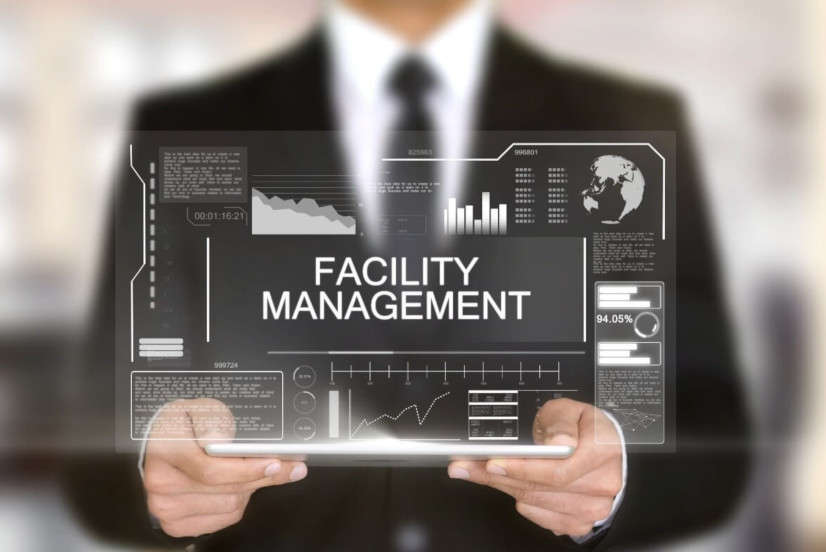Secret Trends Forming the Future of Facility Monitoring in 2024
As we look in advance to 2024, the landscape of facility monitoring is poised for substantial improvement, driven by several vital patterns. The integration of wise building modern technologies and a shift in the direction of data-driven decision-making guarantee to boost functional efficiency while focusing on sustainability in practice. The emergence of hybrid job designs is improving office environments, demanding ingenious design services that provide to developing staff member needs. Amidst these adjustments, the focus on passenger health continues to get grip, underscoring the value of a healthy and balanced office. How these patterns will certainly show up in practice stays a critical question for market specialists.
Smart Structure Technologies

Smart structure innovations encompass a vast selection of systems, consisting of intelligent lights, cooling and heating controls, and safety systems. By integrating these systems, center supervisors can keep track of and adjust criteria in real-time, resulting in significant decreases in energy waste and functional expenses. Smart sensing units can identify tenancy levels and change lighting and temperature level accordingly, making certain that energy is just used when essential.
Furthermore, these modern technologies assist in enhanced data collection, permitting organizations to track use patterns and identify possibilities for further renovations. The implementation of wise structure innovations not just adds to sustainability objectives yet likewise develops healthier work settings that can boost worker performance and complete satisfaction.
As we relocate into 2024, the adoption of wise structure technologies will likely speed up, mirroring a broader shift in the direction of even more intelligent, responsive, and lasting center management practices.
Data-Driven Choice Making
Significantly, organizations are leveraging data-driven decision making to improve center monitoring techniques. By utilizing data analytics, center supervisors can acquire actionable insights that considerably enhance functional performance and source allocation. The combination of sophisticated innovations, such as IoT sensing units and real-time surveillance systems, makes it possible for the collection of vast amounts of data on building performance, occupancy rates, and energy usage.
This riches of info enables center supervisors to determine patterns, predict maintenance requirements, and proactively address problems before they intensify. Predictive analytics can forecast equipment failures, lowering downtime and repair expenses. Furthermore, data visualization devices promote much better communication amongst stakeholders, ensuring that notified choices are made collaboratively.
Moreover, data-driven approaches boost critical preparation by enabling center managers to evaluate the efficiency of existing methods and make notified choices regarding financial investments in modern technology or facilities. As organizations increasingly focus on operational excellence, data-driven choice making is poised to come to be a foundation of successful center administration techniques in 2024 and beyond. Inevitably, the capability to leverage information successfully will empower companies to produce more reliable, efficient, and resilient centers.
Sustainability and Green Practices
The focus on data-driven choice making naturally straightens with the growing concentrate on sustainability and eco-friendly practices within center management. As companies progressively focus on environmental duty, facility supervisors are leveraging analytics to enhance source usage, lower waste, and reduce carbon impacts. This calculated approach allows the integration of energy-efficient systems, such as LED illumination, smart a/c controls, and renewable power resources into center operations.
Additionally, the implementation of lasting techniques extends past power usage. Center managers are promoting and embracing green materials recycling campaigns to create a circular economic climate within their centers. This not only improves the ecological account of the company yet likewise cultivates a culture of sustainability among workers.
Conformity with environmental guidelines is another crucial element driving the fostering of environment-friendly practices. By using data analytics, facility managers can keep an eye on conformity metrics and identify areas for improvement, ensuring adherence to regional and worldwide sustainability criteria.
Crossbreed Job Models
A significant shift towards hybrid work designs is improving the landscape of center monitoring in 2024. This paradigm integrates remote and in-office job, requiring a reevaluation of area utilization, source appropriation, and staff member involvement strategies. Organizations are increasingly identifying the relevance of versatile work areas that deal with diverse needs and preferences.
Center managers discover this need to adapt by carrying out versatile workplace layouts that sustain collective initiatives while offering locations for concentrated job. This consists of the integration of modern technology to facilitate seamless interaction and collaboration among remote and in-office workers. Smart structure options, equipped with analytics and sensing units, allow for real-time monitoring of space use, making it possible for organizations to enhance their atmospheres efficiently.
In addition, hybrid work models emphasize the need for effective facility administration that prioritizes employee experience. In essence, the hybrid job design is revolutionizing facility monitoring, urging a positive technique to satisfy the progressing needs of the labor force.
Enhanced Owner Health
As companies welcome look at this now hybrid job designs, an increased concentrate on occupant health is ending up being important to facility management strategies. Facility Management. This change acknowledges that a healthy and satisfied workforce straight affects efficiency and retention prices. Facility supervisors are currently prioritizing environments that advertise mental and physical well-being, incorporating components such as natural lighting, biophilic layout, and obtainable wellness resources

Innovation plays an essential duty in this development. Smart structure systems can monitor environmental aspects and readjust setups in real-time, guaranteeing ideal convenience degrees - Facility Management. In addition, feedback mechanisms, such as occupancy sensing units and staff member studies, permit center managers to continually fine-tune wellness efforts based upon passenger demands.

Verdict
In 2024, the future of facility management will certainly be significantly influenced by the integration of wise structure technologies and data-driven decision-making, promoting enhanced operational performance. These patterns collectively emphasize the advancing landscape of center management in response to modern challenges and opportunities.
Center managers are taking on green materials and advertising reusing campaigns to develop a circular economic situation within their centers.A considerable shift in the direction of hybrid job designs is reshaping the landscape of center management in 2024.Moreover, crossbreed work designs emphasize the requirement for efficient center administration that focuses on worker experience.As organizations accept hybrid work models, an enhanced focus on resident health is ending up being important to center monitoring approaches.In 2024, the future company website of center management will certainly be significantly affected by the integration of wise structure innovations and data-driven decision-making, cultivating boosted operational efficiency.